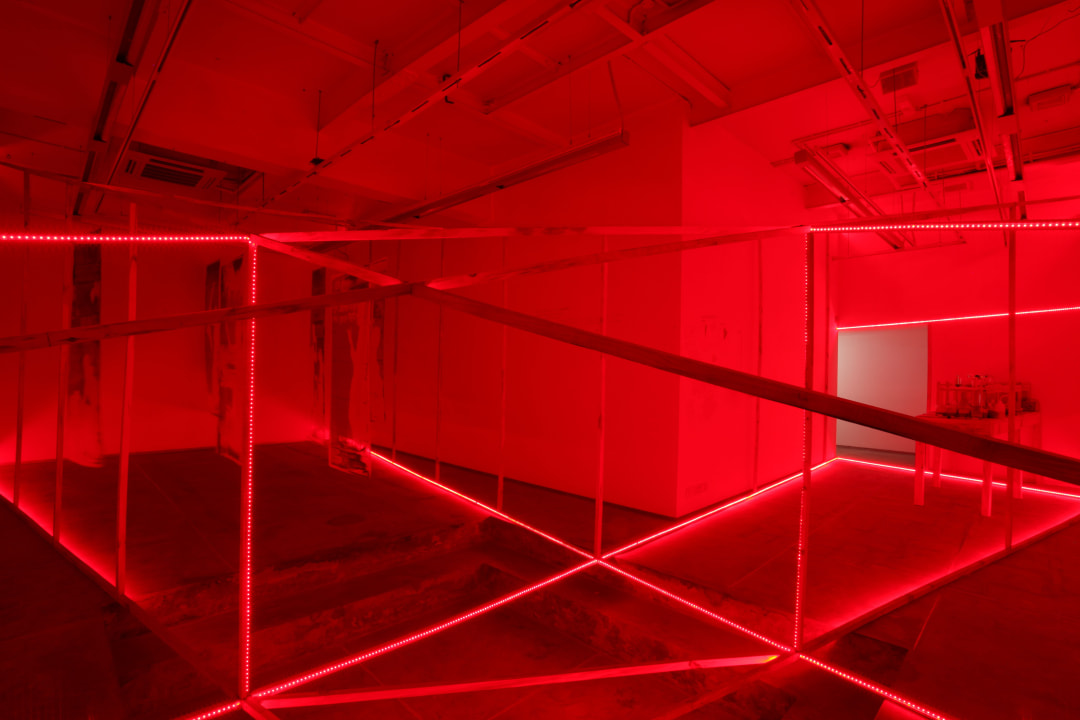The charming landscape which I saw this morning, is indubitably made up of some twenty or thirty farms. Miller owns this field, Locke that, and Manning the woodland beyond. But none of them owns the landscape. There is a property in the horizon, which no man has, but he whose eye can integrate all the parts, that is, the poet. This is the best part of all these men’s farms, yet to this, their land-deeds give them no title.
– Emerson, Nature (1836)
Experimenter presents, Reversed Perspective: 3 Conjunctions, Sanchayan Ghosh’s second solo exhibition at the gallery. Encompassing performance, public workshops, site specific work and multi-media installations, Ghosh works with the architecture of the gallery, distorting its visual-scape by reversing the perspective of viewing as an extension of his ongoing projects on understanding land in Birbhum, West Bengal, its economic & cultural politics and the landscape that this translates into.
Sanchayan Ghosh, has over the last 10 years been working through workshop-based models, with communities of marginalized land all over the country, including some of the strife ridden states in the North Eastern part of India, Jammu & Kashmir and the Adivasi belts in Birbhum around Santiniketan, where Ghosh is an associate professor at the faculty of Visual Arts, Visva Bharati University. A large part of these projects are based on conversations and interactive studies that engage with the local populations and most often take the form of collective performance, visual maps, diagrams and observations, which are sometimes ephemeral and at other times recorded in multiple medium, aural, written, photographic and others. In Reversed Perspective: 3 Conjunctions, Ghosh builds a multi-disciplinary and architectural intervention in the study of landscape. Borrowing from faculties such as agriculture, economics, history, geography and sociology, Ghosh creates a laboratory that tests soil extracted from different parts of Birbhum, geographically a fringe landscape and juxtaposes its political, social and economic history as semiotic metaphors.
A defining line drawing in red light seems to open out the architecture of the gallery within which are strategically placed studies, observations and screen casts of shadows of people of Birbhum. The shadow casts made on silk-screen by exposing the silhouettes of local people using soil mixed with photosensitive material as the medium, is laden with possibilities in its interpretations, the use of the color red in creating the setting within which these works are placed, seem to hint at the configuration of the red soil (ranga maati) and also to the multilayered history of the land, ridden with religious, communal and cultural conflict On a modified laboratory table, several samples of local soil are being tested, not only of their bio-chemical properties, but are presented intertwined with factual data about their land politics, the key moments in its specific history and their socioeconomic status.
Sanchayan Ghosh | Reversed Perspective: 3 Conjunctions: Experimenter – Hindustan Road
Past exhibition

